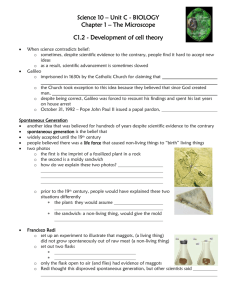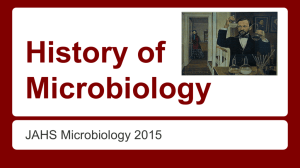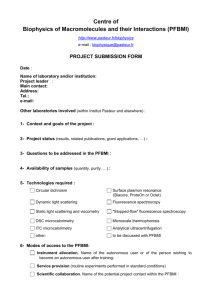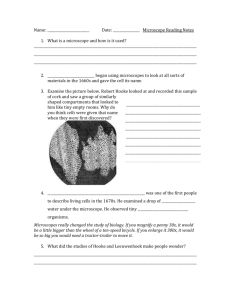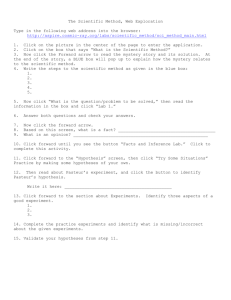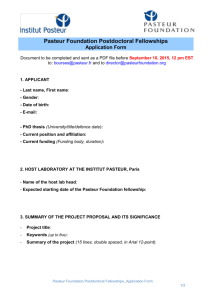February 13 Cells Theory
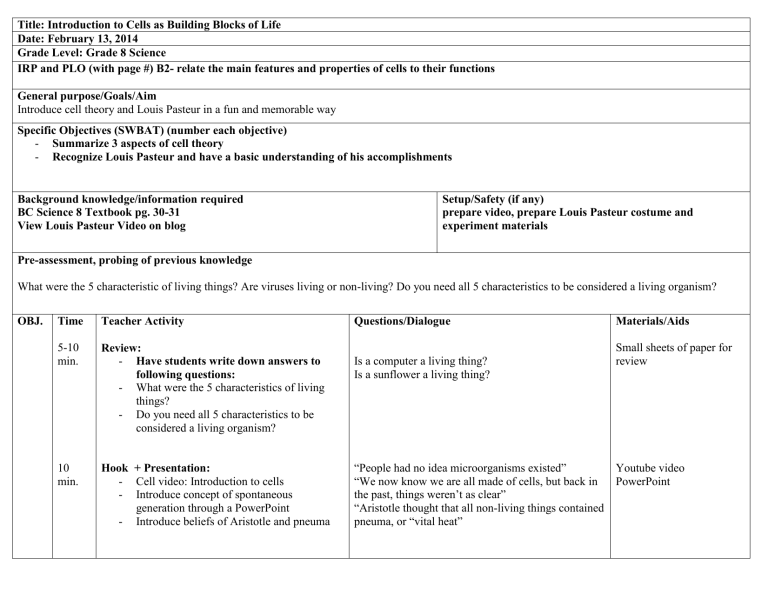
Title: Introduction to Cells as Building Blocks of Life
Date: February 13, 2014
Grade Level: Grade 8 Science
IRP and PLO (with page #) B2- relate the main features and properties of cells to their functions
General purpose/Goals/Aim
Introduce cell theory and Louis Pasteur in a fun and memorable way
Specific Objectives (SWBAT) (number each objective)
Summarize 3 aspects of cell theory
Recognize Louis Pasteur and have a basic understanding of his accomplishments
Background knowledge/information required
BC Science 8 Textbook pg. 30-31
View Louis Pasteur Video on blog
Setup/Safety (if any) prepare video, prepare Louis Pasteur costume and experiment materials
Pre-assessment, probing of previous knowledge
What were the 5 characteristic of living things? Are viruses living or non-living? Do you need all 5 characteristics to be considered a living organism?
OBJ. Time
5-10 min.
10 min.
Teacher Activity
Review:
Have students write down answers to following questions:
What were the 5 characteristics of living things?
Do you need all 5 characteristics to be considered a living organism?
Hook + Presentation:
Cell video: Introduction to cells
Introduce concept of spontaneous generation through a PowerPoint
Introduce beliefs of Aristotle and pneuma
Questions/Dialogue
Is a computer a living thing?
Is a sunflower a living thing?
“People had no idea microorganisms existed”
“We now know we are all made of cells, but back in the past, things weren’t as clear”
“Aristotle thought that all non-living things contained pneuma, or “vital heat”
Materials/Aids
Small sheets of paper for review
Youtube video
PowerPoint
OBJ. Time
10 min.
10 min.
10-15 min.
Teacher Activity
Role-play van Helmont:
Role-play as van Helmont and recreate his experiments
Put various objects inside box to see if any mice have grown (spontaneous generation is true!)
Think-Pair-Share: What errors could you find in val Helmont’s experiment? What would you have done to improve his experiment? (Draw it out on whiteboard)
Students will share their answers
Recreate Pasteur’s experiment:
Recreate Louis Pasteur’s experiment to show bacteria couldn’t grow inside flasks
Yellow beaker represents broth
Green liquid beaker represents broth after bacteria
1.
Pour yellow “broth” into 2 flasks
2.
Put them onto hot plate to recreate boiling
3.
Leave one flask open, one flask with long neck
4.
Show that open flask has turned green given time
5.
Remove long neck and show that it has turned green as well
Ask students to make predictions before proceeding to step 4
What is your conclusion?
Pasteur Worksheet:
Distribute worksheet that details Pasteur’s experiment
Go over worksheet with students
Questions/Dialogue
“Vital heat could generate living things. Different nonliving material with different amounts of vital heat could produce different organisms. For example, clams and scallops grew out of sand, maggots grew out of meat”
Hello! My name is Jan Baptist van Helmont, and I want to prove to you that mice can appear out of thin air!
Questions:
What errors could you find in van Helmont’s experiments?
What would you have done to improve his experiments?
What do you expect the results to be?
Questions:
What is your prediction? What happens to broth in open flask? What happens to broth in long necked flask?
What if I remove the long neck and leave it out?
What is your conclusion?
Materials/Aids
Box, t-shirt, wheat/flour, computer mouse
2 erlenmeyer flasks
1 beaker with yellowcoloured water
1 beaker with greencoloured water
2 flasks of water with yellow food colouring
1 flask of water with green food colouring
Hot plate
10 min.
5 min.
Cell Theory:
On whiteboard: Cell is basic unit of life, all organism are composed of one or more cells, all cells come from other cells
Basic unit of life: A cell is required to be considered living
All organism are composed of cells, all animals, plants, bacteria
Cells are formed during cell division
Distribute notes and questions on cell theory
Conclusion:
Go over what has been learned
Have students write reflection in notebook: 2 thing learned, 1 thing curious about
Evaluation
Summative: Worksheet checked for completion the next day
Formative: Cooperation and participation in group collaboration activities
References and background reading
BC Science 8 pg. 31-32
Extension Activities
Louis Pasteur activity sheet
Read BC Science 8 pg. 25-29
Notes to self
© Amir Atabeygi 2005
